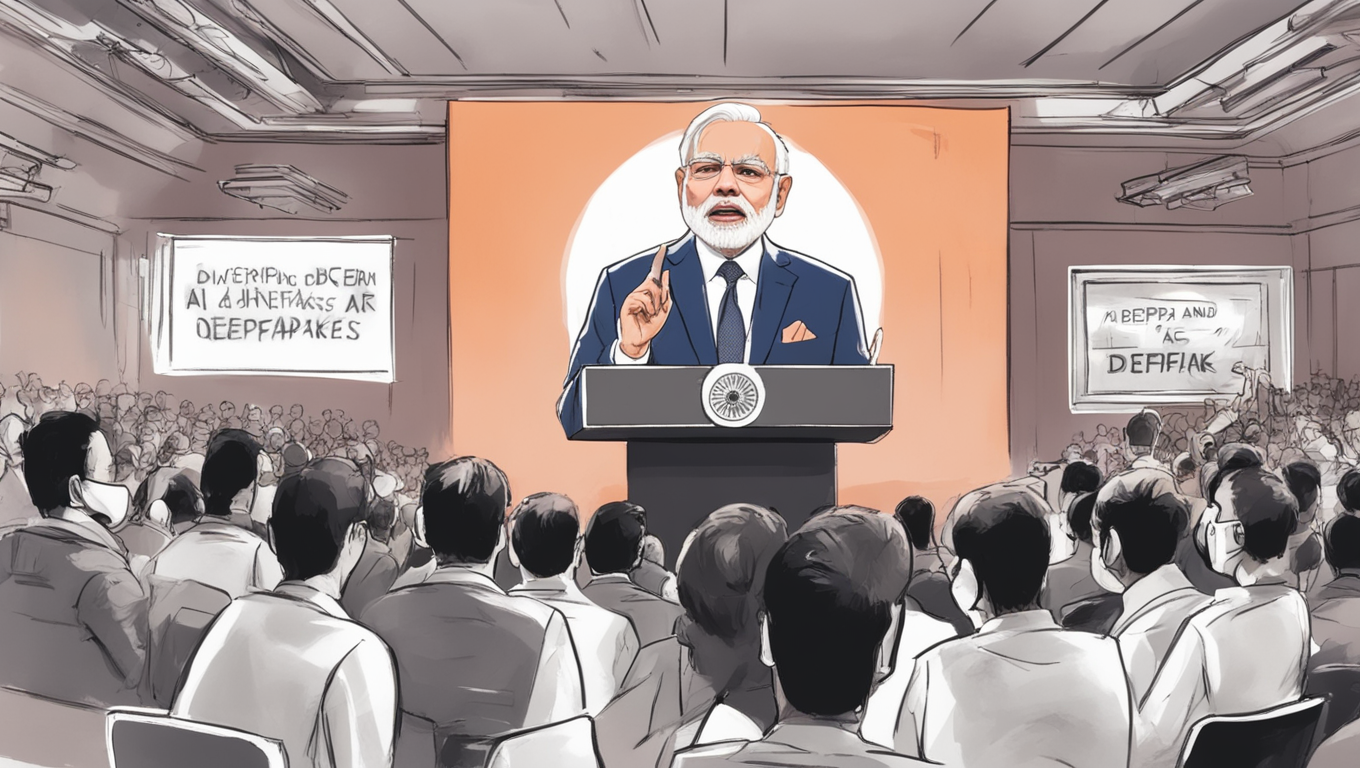In a recent gathering at BJP’s central office in New Delhi, Prime Minister Narendra Modi voiced his concerns about the rise of ‘deepfake’ videos and urged journalists to educate people on Artificial Intelligence (AI) and deepfakes. He shared his own experience of coming across a video where he was singing, which had been circulated by people who admire him. This incident has prompted the Indian government to take action and address the issue of deepfake videos.
Rajeev Chandrasekhar, the Minister of State for Electronics and Information Technology of India, has criticized social media platforms for their inability to handle content containing deepfakes and misinformation. He specifically mentioned the recent deepfake video of actress Rashmika Mandanna, which went viral. The video received backlash from politicians and celebrities, with many claiming that it was a morphed video of an Indian-origin individual living in the UK.
The Indian government’s response to this incident has been swift. The Ministry of Electronics and Information Technology has issued an advisory to social media companies, directing them to take swift action against any content that violates the rules and regulations outlined in the IT Rules 2021. The statement from the ministry emphasizes the importance of timely removal of such content and disabling access to it.
The concerns surrounding deepfake videos are not unfounded. Deepfakes are fabricated or altered videos that use AI technology to manipulate or superimpose someone’s face onto another person’s body. This has raised concerns about the potential for misinformation and the use of deepfakes for malicious purposes, such as propaganda or spreading false information.
The Indian government’s focus on addressing this issue is commendable. Deepfakes have the potential to undermine trust in media and create confusion among the public. It is crucial for internet-based platforms to adhere to the rules and regulations outlined by the government and take swift action to prevent the spread of deepfake videos.
While social media platforms have been making efforts to combat deepfakes, there is still a long way to go. The rapid advancements in AI technology make it increasingly easier to create convincing deepfakes that are difficult to detect. This calls for continuous research and innovation in the field of AI to develop robust tools and techniques that can effectively identify and flag deepfake content.
As the Prime Minister rightly pointed out, it is important for journalists and media professionals to play an active role in educating the public about deepfakes and AI. By raising awareness and providing accurate information, journalists can help people navigate the complexities of this evolving technological landscape.
In the words of Prime Minister Modi, “These new technologies can be used for both constructive and destructive purposes. It is our responsibility to ensure that AI and deepfakes are used for the betterment of society.” With the government’s focus on addressing the issue and the collaboration of media professionals, there is hope for a future where the negative impact of deepfakes can be minimized, and technology can be harnessed for the greater good.





Use the share button below if you liked it.